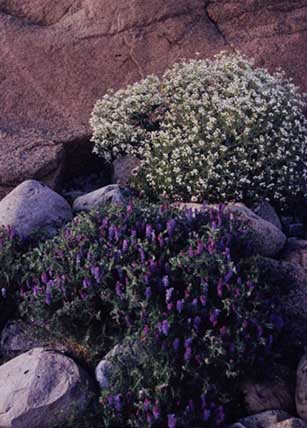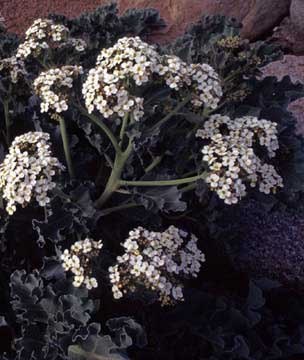|
Sea kale was first discovered in Sweden by Pehr Kalm,
a learner of Carl von Linné. Kalm saw this species at Koster in the northern
part of Bohuslän in 1742. Pehr Kalm initially thought it was a farmed
type of cabbage that had spread in wild nature, but soon he realized that it was
wild growing.
At Kramkistesund in Stångehuvud are several specimens of sea kale.
The leaves of sea kale are large, fleshy and distinctive gray-green, due
to a wax layer that protects against excessive evaporation. The root system goes deep to reach water - necessary
on a boulder beach, where only coarse soil material remains. When the
centimeter-sized, spherical fruits have ripened and dried in the autumn
the stalks are broken of waves and wind. They end up in the water, float away and
are eventually thrown onto land, where individual seeds at best can give rise to a new plant.
|

The sea kale is in June covered
with white flowers.
In the foreground Vicia cracca.
|

